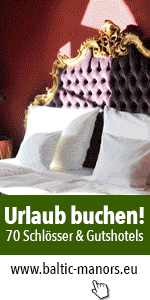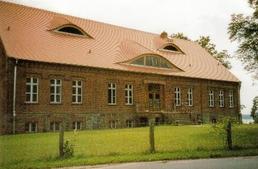Manor House Hildebrandshagen near Woldegk
In 1645, when the last Blankenburg died without heirs, Otto von Schwerin became his successor.
In 1652, he first acquired the slopes of Wolfshagen. In 1670, he became the owner of the entire surrounding land. After he died, his property passed to his son. Imperial Count Johann Christoph Hermann von Schwerin then became key to Hildebrandshagen after he inherited the Wolfshagen possessions in 1827. When he died in 1858, he left his son, Wilhelm Stanislaus von Schwerin, the properties Göhren, Hildebrandshagen, Wilhelmsheyn, and Bülowssiege. He had transformed almost all these properties to meet the then most modern economic aspects and had greatly expanded some of them including Hildebrandshagen. The manor house contains the manuscript of various buildings built under Hermann von Schwerin in Wolfshagen. With the arcade below the eaves and the friezes on the gables, the one-storey, 11-axle brick building with a saddle roof tends to resemble the Wolfshagen guest house, the local smithy, or the store. This is why it is assumed that the Hildebrandshagen manor house was built around 1850. Its last lord, Ulrich Wilhelm Count Schwerin of Schwanenfeld, inherited Göhren, Hildebrandshagen, and other properties from his uncle in 1926. In 1932, he had to sell Hildebrandshagen due to the global economic crisis. It was purchased by a settlement company, which divided it into 19 sections, each with the size of 20 ha, a 40 ha residual site, and a disposition section. Three-hundred families had applied for the subdivided land sections in Hildebrandshagen. These were from Saxony, Thuringia, and Westphalia. With the sale came the end of the reign of the von Schwerin family, who had domineered the village since the mid-17th century.
Since the estate was divided up in the early 1930s, the Hildebrandshagen manor house has been used for residential purposes to date.


